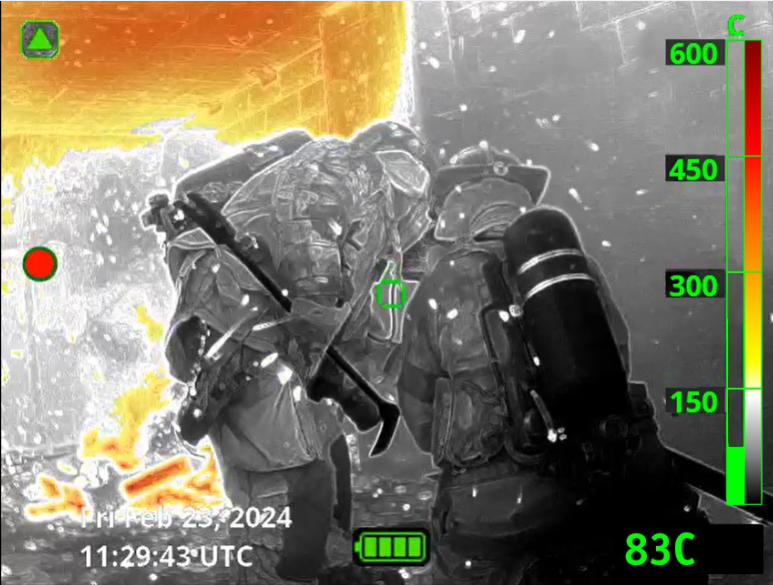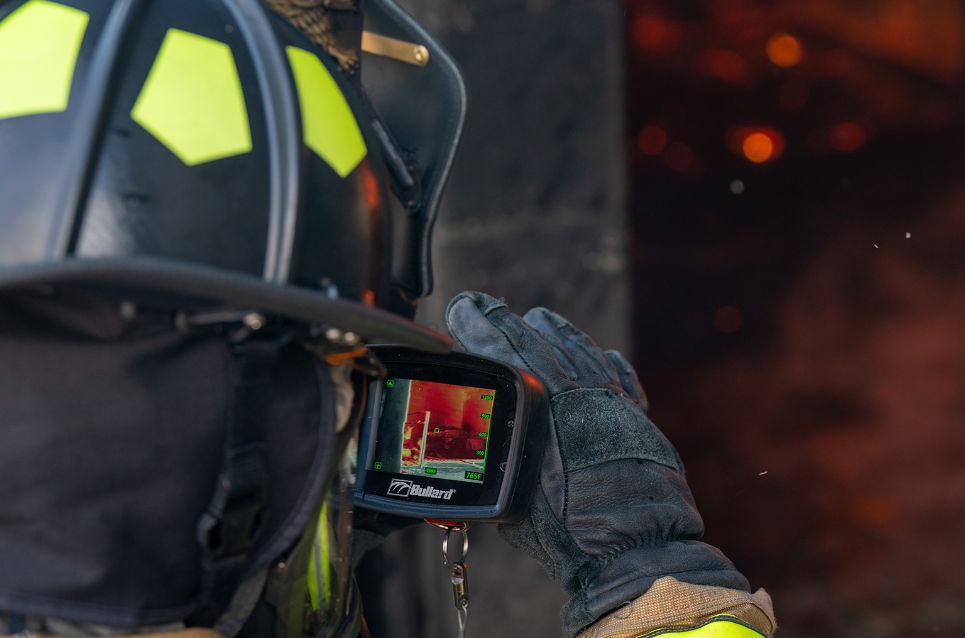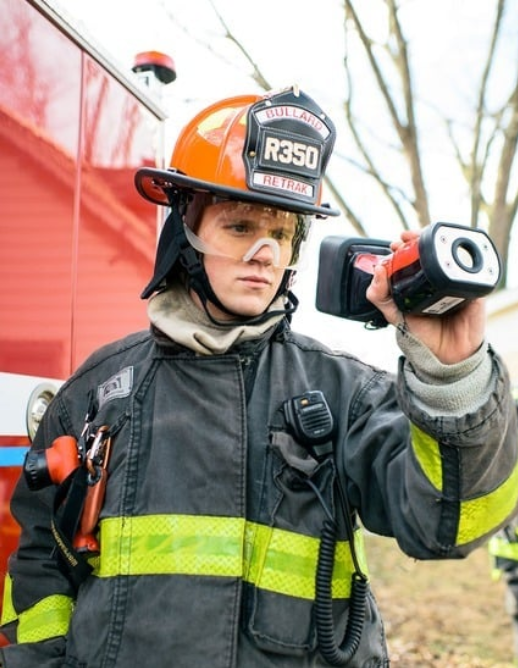Resolution is one of the most critical specifications in a thermal imager, directly influencing its performance and usability. For firefighters, every decision impacts safety and outcomes, making it essential to understand resolution when choosing the right device.
What is Resolution?
Resolution refers to the number of pixels in a thermal imager’s sensor, typically expressed as width x height (e.g., 320 x 240 pixels). Each pixel detects heat in a specific part of the scene, and the more pixels an imager has, the more detail it can capture and display.
Breaking Down Pixel Counts:
- A thermal imager with a 320 x 240 resolution contains 76,800 pixels.
- A higher-resolution imager with 640 x 480 resolution has 307,200 pixels—4x more pixels than the 320×240 model.
Analogy: Think of resolution like moving from a standard-definition (SD) TV to high-definition (HD). An HD TV shows more detail and clarity because it has more pixels. Similarly, a thermal imager with higher resolution provides a sharper, clearer view of your environment.

Why is Resolution Important in Firefighting?
Firefighters rely on thermal imagers to see through smoke, identify hazards, and locate victims. Here’s how resolution impacts their work:
- Higher resolution helps ensure finer details are visible. For example, in a 640 x 480 imager, you might clearly see the outline of a victim, distinguish objects in the room, or identify the exact location of a fire’s progression. Lower-resolution imagers may blur or obscure these critical details.
- High-resolution devices allow firefighters to detect many details within a hazard, such as identifying a structural weakness on a high ceiling or spotting a heat signature across a factory floor.
- A clearer image reduces confusion, helping firefighters make quicker, safer decisions.
Firefighter Testimonial:
“With a 320 x 240 imager, I could see heat sources, but upgrading to a 640 x 480 showed me what they actually were—pipes, victims, or a false alarm. That clarity resulted in quicker and safer decisions on the fireground.”

Comparing Resolutions: What Do the Numbers Mean?
Here’s a comparison of common thermal imager resolutions and their applications:
- 320 x 240 (76,800 pixels): Mid-range resolution providing a good balance of cost and performance. Ideal for general firefighting applications, such as room searches or structural size-ups.
- 640 x 480 (307,200 pixels): High-performance resolution offering exceptional clarity. Perfect for large-scale operations, search and rescue, and identifying subtle heat variations during overhaul.
Visual Example: Imagine looking at a distant object through a foggy window. With a 160 x 120 imager, the object appears as an indistinct blur, leaving you unsure of its shape or details. A 320 x 240 imager provides a clearer image, allowing you to distinguish basic outlines and shapes, though finer details may still be unclear. A 640 x 480 imager, in contrast, offers a sharp, detailed view, helping you identify exactly what you’re seeing, such as distinguishing a person from debris or identifying the precise source of heat.
Currently, the only 640 x 480 available in the firefighter market is the Bullard XT Series thermal imager, which you can view here.

Resolution in Real-World Scenarios
Resolution is a game-changer in these situations:
- Search and Rescue: Higher resolution can mean the difference between spotting a victim and missing them in smoke-filled rooms.
- Structural Assessments: Detect cracks, weakened supports, or hotspots on walls and ceilings with greater precision.
- Overhaul Operations: Pinpoint residual heat in debris to confirm the fire is fully extinguished.
- Hazmat Response: Monitor container temperatures from a safe distance to assess risks accurately.
Example: A firefighter in a collapsed building using a 640 x 480 imager may be distinguish between a heated object and a person trapped under debris. A 320 x 240 imager might only show a general heat signature, requiring more time and effort to confirm.

Balancing Cost and Value
Higher resolution often comes with a higher price tag. However, the potential benefits—greater efficiency, faster decision-making, and improved safety—can outweigh the initial investment. A higher-resolution imager may help save lives, time, and resources, making it a smart long-term choice.

Checklist: Choosing the Right Resolution
When evaluating thermal imagers, ask these questions:
- What are your primary use cases? Search and rescue? Structural assessments? Overhaul?
- How large are the areas you typically operate in? Wide spaces benefit more from higher resolution.
- What level of detail is essential? Consider whether you need to identify subtle hazards or just navigate.
- What is your budget? Balance resolution with cost to get the best value for your department.

Conclusion: Resolution Matters
Resolution isn’t just a technical spec—it can be lifeline in high-stakes situations. A thermal imager with the right resolution provides the clarity needed to navigate smoke-filled rooms, By understanding pixel counts, comparing resolutions, and evaluating your department’s specific needs, you can choose the thermal imager that will keep your team effective and safe.
Check out this video on why resolution is important here.
Contact a Bullard Expert for a more in depth look at resolution here.


